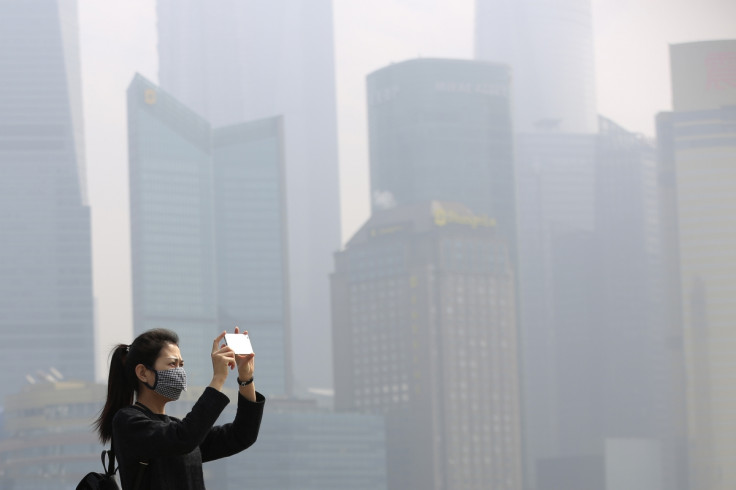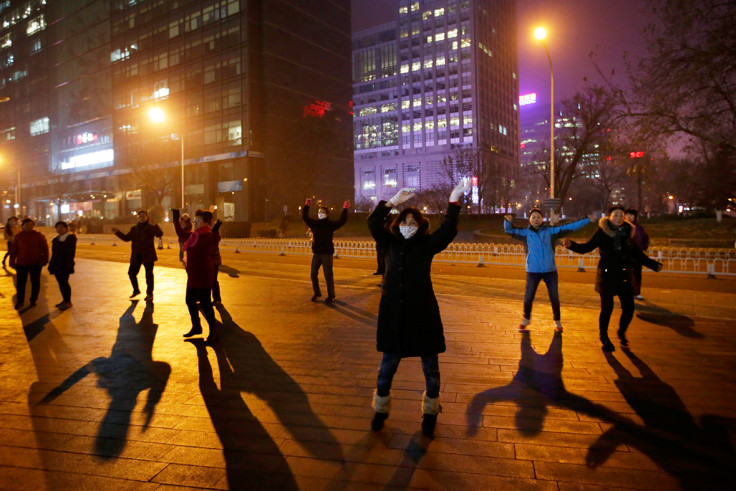How China's smog-choked cities could be Communist Party's biggest challenge yet

For a long time in China, pollution was a dirty word. Beijing wanted the world to focus on the successes of its economic miracle rather than its significant costs. The smog-choked cities, toxic rivers and residents taking to the streets in protective masks were not the story China wanted told. As a result, there was little or no news in the state-controlled media about its growing environmental crisis.
But 2016 finds China amid what appears to be a very real effort to clean up its act. Last year Chinese Premier Li Keqiang branded pollution "a blight on people's quality of life," and pledged that China "would fight it with all its might". On 22 April, Beijing signed the Paris Agreement at the United Nations and has promised to ratify the wide-ranging deal before the G20 summit in September.
In a country where freedom of speech is so heavily curtailed, it is still not open season in discussing pollution in China, but the serious decline in air quality has forced the government to act. Chinese restrictions on the internet may enable the government to deny its history, but even the Communist Party would struggle to persuade the Chinese people that a smog-filled sky is blue.
"It is definitely true that if you compare the situation to 2010 when [pollution] was actually denied, there is more openness today," said Thibaud André, a research associate at Daxue Consulting in Beijing. "But some problems are so obvious that they cannot be denied."
In December, Beijing had its first-ever smog 'red alert' that, on the one hand, meant that the government was willing to at least admit that pollution was still a problem in China, on the other, it demonstrated that things in China remained very bad.
In the 1960s and 1970s, the US faced similar levels of air pollution as China, a situation that led to the passing of the Clean Air Act.
Over the past five years there have been a slew of damaging reports and statistics relating to pollution in the country. In July 2015 experts claimed that air pollution contributed to the deaths of 1.6 million people in China every year, while 92% of the population experienced 120 hours of unhealthy air. It said that worldwide, air pollution was a bigger killer than AIDS, malaria and breast cancer.
China is the world's largest emitter of greenhouse gases, with coal responsible for 75% of power generation in the country. As far back as 1997, the World Bank was warning that "hundreds of thousands of deaths" had been caused by industrial air pollution and by 2007 it was reported that only 1% of urban Chinese were breathing air deemed safe by the European Union (EU).
Even when pollution was a taboo subject, China's efforts to combat it have varied widely – from the sensible (banning plastic bags) to the fantastic (firing thousands of 'weather changing' rockets into the air during the 2008 Beijing Olympics). But in 2013 the government introduced its first action plan to tackle the issue, setting a target of reducing air pollution by 10% by the year 2017.
Prior to the 2014 Asia-Pacific Economic Cooperation summit in Beijing, China cut factory production and banned cars from the streets rather than blasting weather-altering rockets into the sky. It did the same in 2015 in the run up to the 70<sup>th anniversary of the end of WW2 and got its blue sky in return, claiming the lowest PM2.5 (harmful air particles) concentration in the Chinese capital ever.
The watershed moment in the reporting of China's air pollution problems came in 2011, when the US Environmental Protection Agency (EPA) began giving real-time PM2.5 updates in Beijing. PM2.5 refers to tiny "particulate matter" that is less than 2.5mm in diameter and can seriously damage the lungs and heart, causing respiratory disease and heart conditions.
There is no safe level of PM2.5 exposure, but the World Health Organization (WHO) said that it should be below 25 in any one day. On 10 May, PM2.5 levels in Beijing were at 37 – ranked as "lightly polluted" for China – while Shanghai was at 22. But at the heart of China's industrial belt things were not as fresh: in Xianyang, in China's Shanxi Province, PM2.5 levels were at 50. In Nanyang, in China's most polluted province of Henan, levels were a staggering 84.
By comparison, in central London on 10 May, PM2.5 levels were at 22 and in New York at 27.

When the US began publishing the data, it was quickly noted that their figures were often wildly different to those issued by the China National Environmental Monitoring Centre, which publishes detailed data on pollution across the country. The results sparked a diplomatic spat between China and the US, but by then the cat was out of the bag.
Later in 2011 a Chinese tech entrepreneur released a mobile phone application – first titled DirtyBeijing and then renamed the China Air Quality Index – that gave real time updates from a number of sources about pollution levels. Over the past five years, the service has spawned dozens of copycats and regularly features on lists of essential apps in the Chinese market.
Its co-creator, Jun Wang, told IBTimesUK that Air Quality China Index now had over 8.5 million downloads and was used on a daily basis by 500,000 people, despite the fact that it often highlights discrepancies between Chinese and US data. Wang said that the firm had only been asked to censor their results once, in November 2014, during the visit of US President Barack Obama for the Asia-Pacific Economic Cooperation (APEC) summit.
China's pollution control efforts are being driven domestically by the leadership's recognition of the political importance of addressing its air pollution problem.
While Wang admits the situation in Beijing and other main cities is improving, the conditions in some of China's northern cities remains the same – if not worse – than in 2010. Daxue's Andre also believes that while there has been very real progress in Beijing, in the industry-heavy cities of the north, the situation remains critical and discussion of the problem is far less common in the press.
But those bullish on the progress of Beijing at tackling pollution across the country point to a commitment to reform at the very highest level. President Xi Jinping adopted "green development" as one of the five key principles of China's 13<sup>th Five Year Plan this year, and there appears to be a clear push towards encouraging and promoting green technology both on a micro and macro level.
In Beijing, electric cars are growing in popularity since they are exempt from new rules that limit the use of petrol-powered cars to alternate days. Reuters reported at the end of 2015 that sales of pure-electric cars increased five-fold in the first 10 months of 2015, putting China on track to overtake the US as the world's largest market for electric vehicles.
"China's pollution control efforts are being driven domestically by the leadership's recognition of the political importance of addressing its air pollution problem… The Chinese government recognises that the economic strategy it has pursued for the last few decades − one based on energy-intensive manufactured fuel by dirty fossil fuels − is no longer sustainable," said Barbara Finamore, the founder of the China programme at the Natural Resources Defense Council (NRDC).
She pointed out that in the 1960s and 1970s, the US faced similar levels of air pollution, a situation that led to the passing of the Clean Air Act. As a result of such legislation, smog pollution from cars in Los Angeles has dropped 98% in the past 50 years. Likewise, the pollution of the Cuyahoga River in Cleveland – so bad that it caught fire in the 1960s – helped to pass the Clean Water Act in 1972.
"China can leapfrog these efforts using new pollution control technologies and policies designed to prevent pollution at its source," Finamore said.
In October 2015, two NGOs successfully sued four men who ran an unlicensed quarry in Fujian Province and in March 2016 a Zhejiang court upheld the decision to impose $12 million (CH¥78 million, £8.3m) fines on three chemical companies that dumped 26,000 tonnes of hazardous waste into a river. That Beijing is allowing such decisions to go ahead is a milestone for China, where the actions of the courts are often beholden to the will of the state.
China still has a long way to go. In 2016 it was revealed that in 2013, air pollution caused the premature deaths of 5.5 million people. And while the situation in some Chinese cities is improving, expatriates that have spent years living and working in China, particularly those with children, now openly talk about leaving. In northern and western China, the pollution is getting worse.
Since Deng Xiaoping began the liberalisation of the Chinese economy in the late 1970s after the death of Mao, China's leaders have sought to persuade the Chinese people that economic success is worth the denial of political freedom – and that China is safe in their hands. The toxic rivers and smog-filled skies are the clearest evidence yet that it is not. Pollution is the Chinese state's biggest challenge yet.
© Copyright IBTimes 2025. All rights reserved.






















